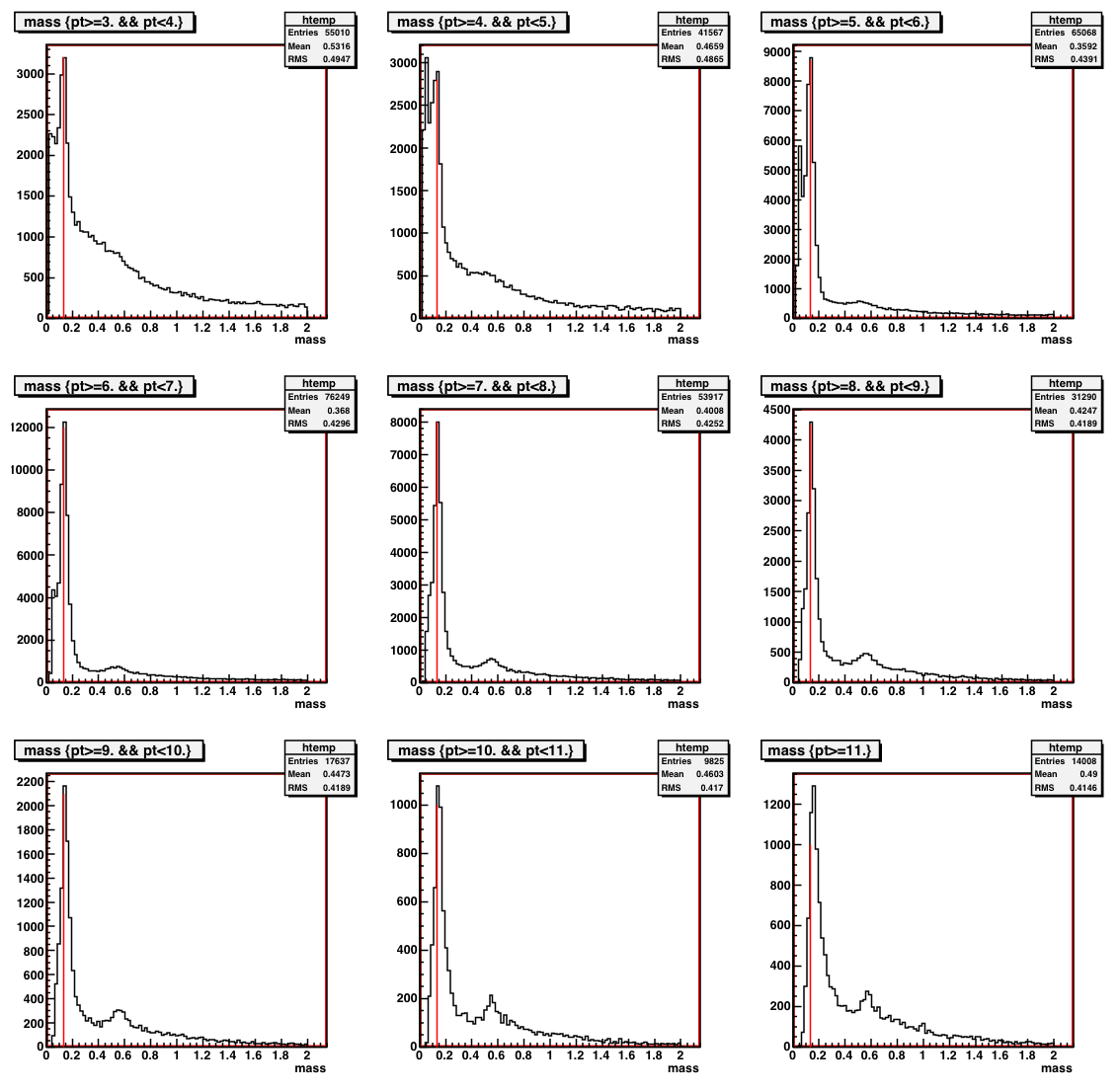Spin PWG Meeting (2/22/07)
Statistics for Late Longitudinal Running- ~ 400 runs (7132001 - 7156028)
- ~ 6.2 million events
- ~ 170K Neutral Pions for HTTP L2 Gamma trigger
- ~ 80K Neutral Pions for HT2 Trigger

This plot shows, for the four triggers (HTTPL2, HT2, JP1, MB) the number of triggers registered normalized by the number of
minbias triggers registered, as a function of run index.
Pions per Event

This plot shows the average number of neutral pions in an triggered event as a function of run number. For my purposes a
neutral pion consists of a reconstructed pion (using Frank's trees) that has the following cuts:
- Energy of each photon > 0.1 GeV
- Pt > 0.5 GeV
- Asymmetry < 0.8
- Mass between 0.08 and 0.25 GeV
- No charged track associated w/ the photons

This plot shows the two-photon invariant mass spectrum for the HTTPL2-Gamma trigger, which is my most abundant and cleanest trigger. The mass
spectra are split into 1 GeV Pt bins, with the exception of the last one which is for everything with Pt more than 11 GeV.
Parsed Run List
Using the QA data shown on plots above (with more detail in my run QA page) I have come up with a preliminary 'good run list.' Basically I took the above event ratio and number ratio plots (along with a similar one for average z-vertex) and made a 4 sigma cut on either side the mean value. Any run with a value that fell outside this cut for either of the high tower triggers was excluded from my preliminary run list (right now the JP1 plots have no impact and are presented for curiosity sake.) Every run that passed these three tests was labeled 'good' and included in my list. My list and the associated run indexes can be found here. The list contains 333 runs.
ALL Checklist
The following is a checklist of 'to do' tasks toward a preliminary ALL measurement.
- Relative luminosity data for the late-longitudinal runs
- Polarization data (note, I have the numbers for the fast-offline CNI measurements and am refining the data for release.)
- Decisions on details (Pt binning, final mass window, etc.)
- Montecarlo studies
- Background studies
- Studies of other systematic effects.
- Other?